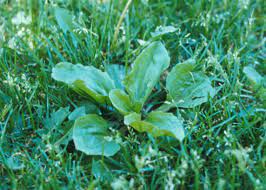
Introduction:
Broadleaf weeds, with their distinct characteristics and often invasive nature, are a common challenge in lawns, gardens, and agricultural fields. Differing from grassy weeds, these plants have broad, flat leaves and present unique control considerations. In this article, we explore the identification, impact, and strategies for managing broadleaf weeds to maintain healthy and vibrant landscapes.
Identification of Broadleaf Weeds:
-
Leaf Structure:
- Broadleaf weeds are easily distinguished by their leaves, which are wide, flat, and generally broader than those of grassy weeds. Types of weeds
- The leaves may vary in shape, size, and color, providing clues for accurate identification.
-
Flower Characteristics:
- Many broadleaf weeds produce conspicuous flowers that can aid in identification.
- Examining flower color, arrangement, and shape can be instrumental in distinguishing between different types of broadleaf weeds.
-
Growth Habit:
- Broadleaf weeds exhibit diverse growth habits, including annuals, biennials, and perennials.
- Understanding the life cycle and growth pattern helps tailor control methods to the specific characteristics of the weed.
Common Types of Broadleaf Weeds:
-
Dandelion (Taraxacum officinale):
- Recognized by its yellow flowers and toothed leaves, dandelion is a pervasive broadleaf weed found in lawns and gardens.
- The deep taproot makes complete eradication challenging, requiring comprehensive control strategies.
-
Clover (Trifolium spp.):
- Clover is a common broadleaf weed with distinctive three-part leaves and small white or pink flowers.
- While some gardeners tolerate clover for its nitrogen-fixing properties, others consider it a weed, requiring targeted control.
-
Plantain (Plantago spp.):
- Plantain is characterized by its rosette of basal leaves and tall spikes of tiny flowers.
- It thrives in compacted soils and disturbed areas, making it a common sight in lawns and driveways.
Impact of Broadleaf Weeds:
-
Competition with Desirable Plants:
- Broadleaf weeds compete with desirable plants for sunlight, water, and nutrients, potentially stunting the growth of lawns and gardens. Prairie dropseed
- They can interfere with the establishment and health of desired grasses or ornamental plants.
-
Aesthetic Concerns:
- The presence of broadleaf weeds can detract from the visual appeal of lawns and landscaped areas.
- Their diverse shapes and colors may disrupt the uniformity of well-maintained green spaces.
Control Strategies for Broadleaf Weeds:
-
Selective Herbicides:
- Selective herbicides designed for broadleaf weed control target the undesirable plants while sparing grasses.
- Timing and application methods are crucial for effective and safe use of herbicides.
-
Manual Removal:
- Hand pulling or digging out broadleaf weeds is an effective method for small infestations.
- It's essential to remove the entire root system to prevent regrowth.
-
Cultural Practices:
- Maintaining proper lawn care practices, such as regular mowing and proper watering, promotes healthy grass, reducing opportunities for broadleaf weeds to establish.
- Aerating and overseeding lawns help improve grass density, minimizing weed competition.
-
Preventive Measures:
- Implementing preventive measures, such as using pre-emergent herbicides and maintaining proper turf density, can hinder the germination and establishment of broadleaf weeds.
Conclusion:
Broadleaf weeds, while diverse in appearance and characteristics, share common control principles. Identification, understanding growth habits, and implementing a combination of cultural practices and targeted treatments are essential for effective management. By adopting a proactive approach, property owners can minimize the impact of broadleaf weeds, ensuring healthier and more aesthetically pleasing landscapes


No comments yet